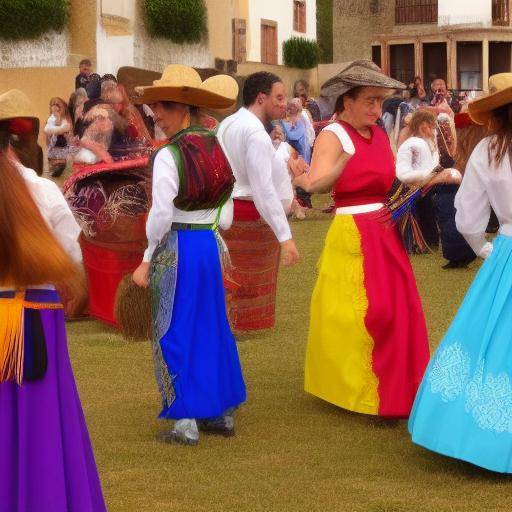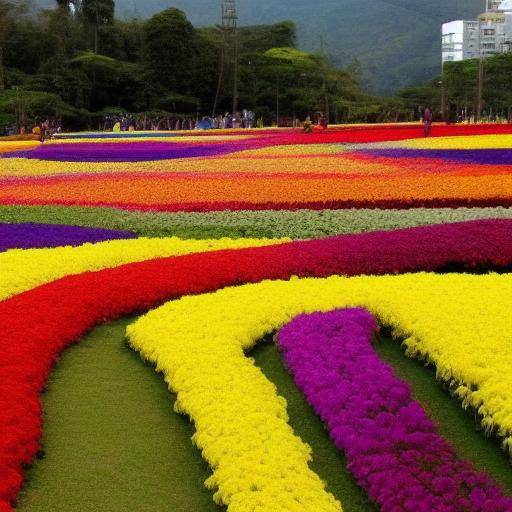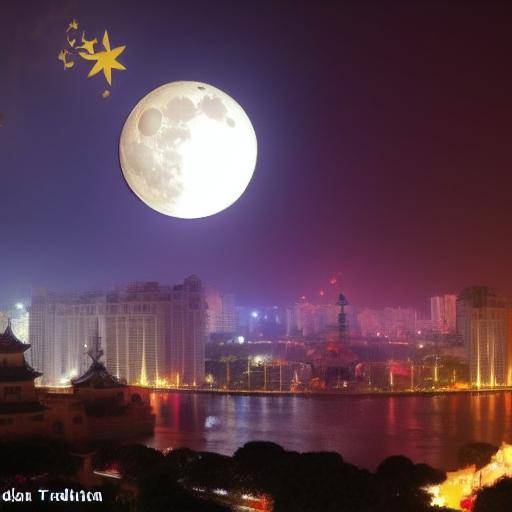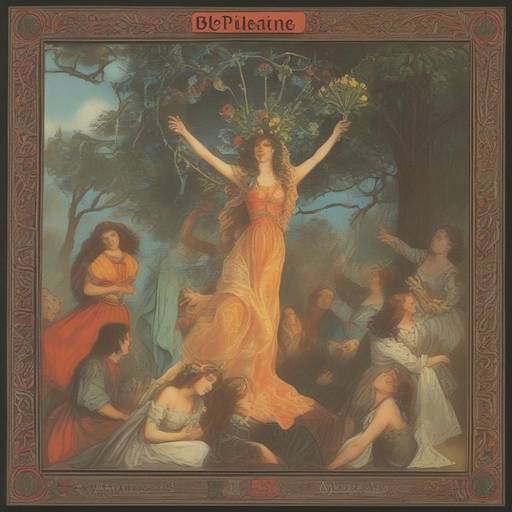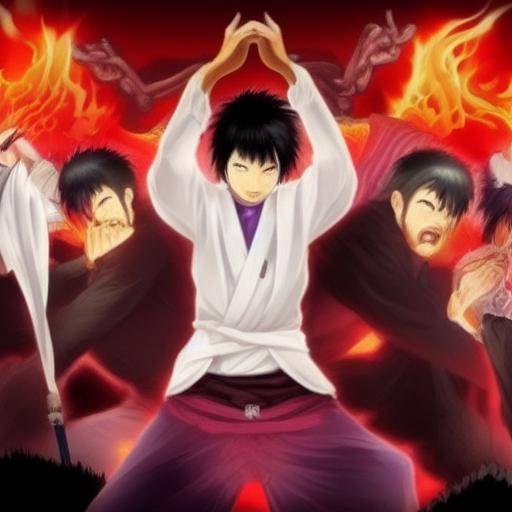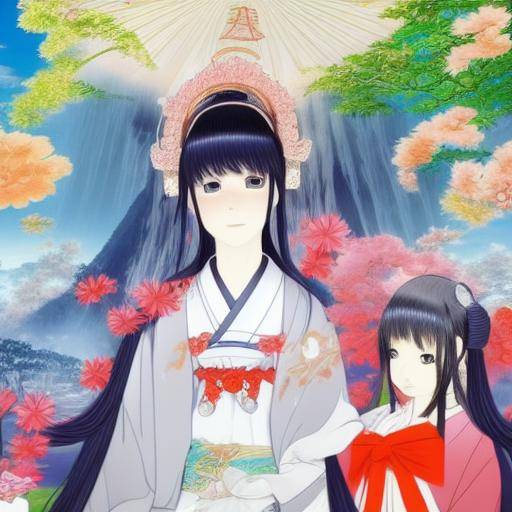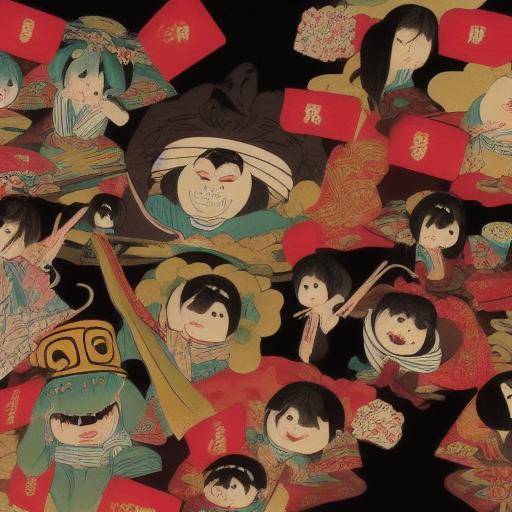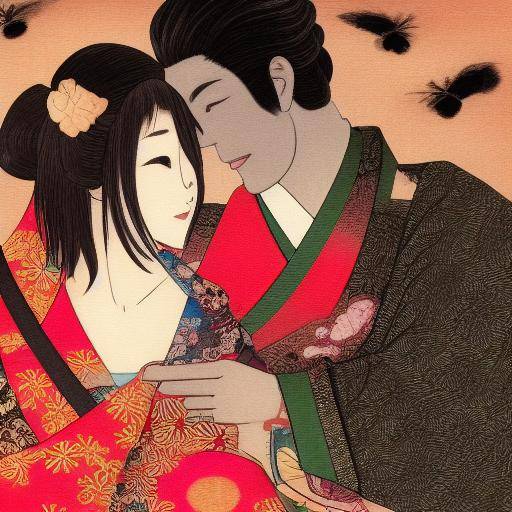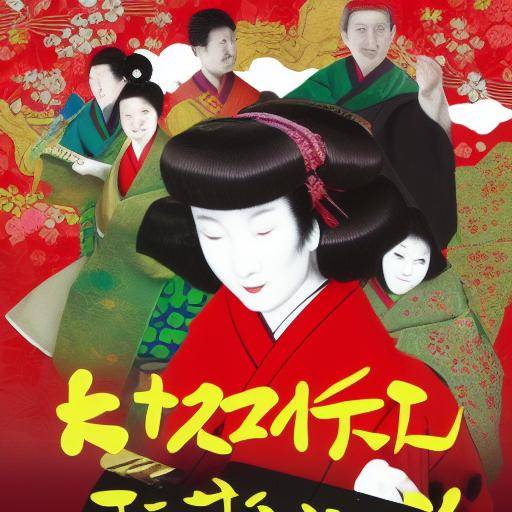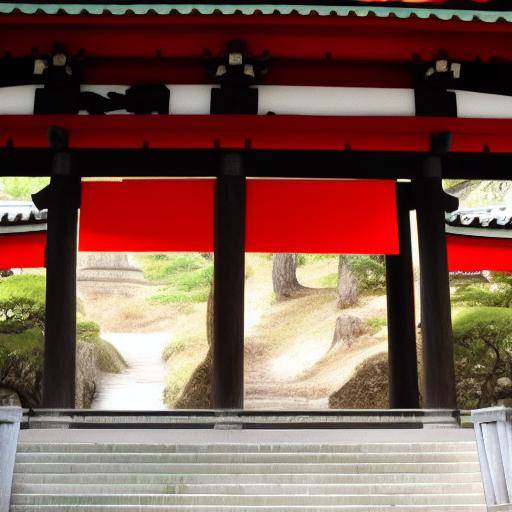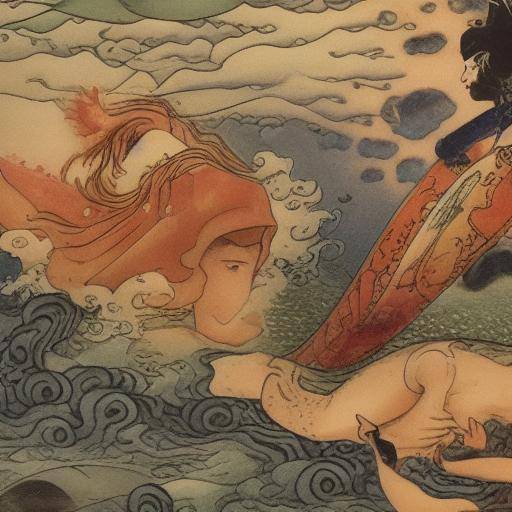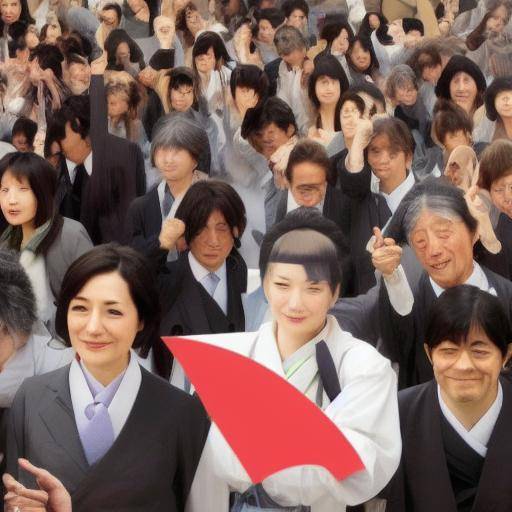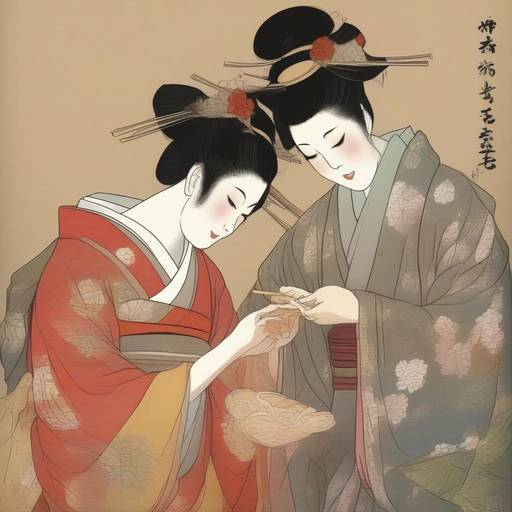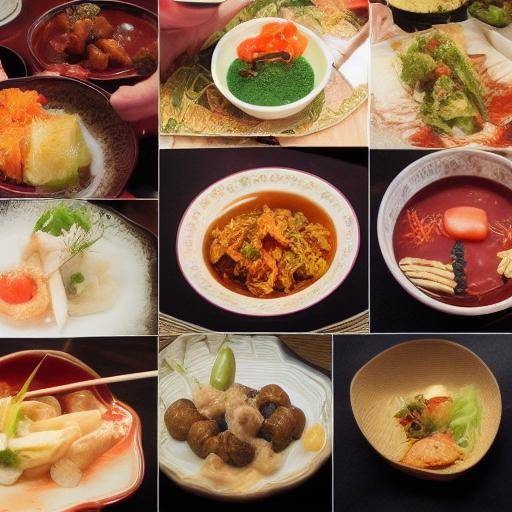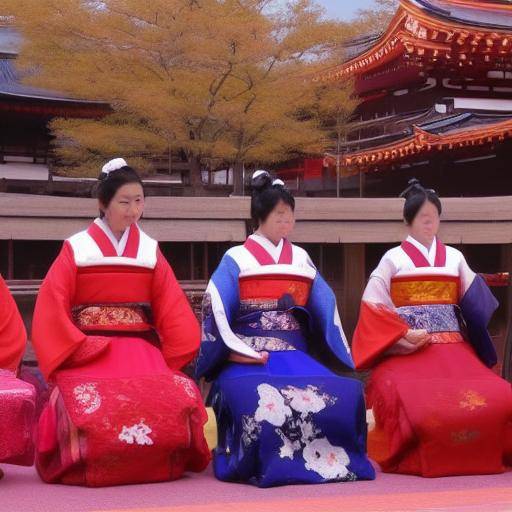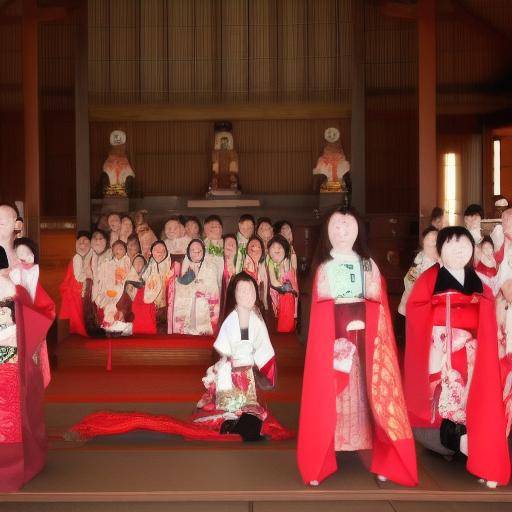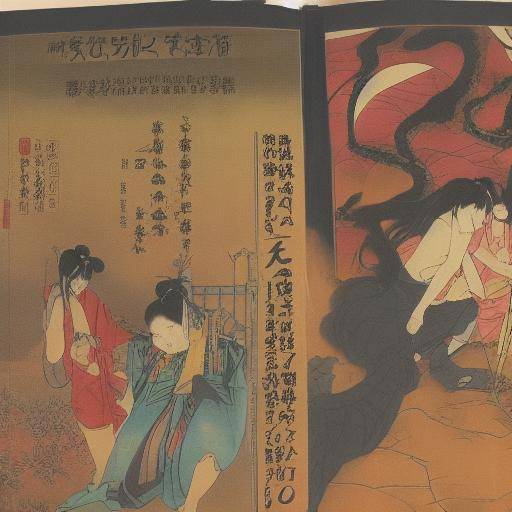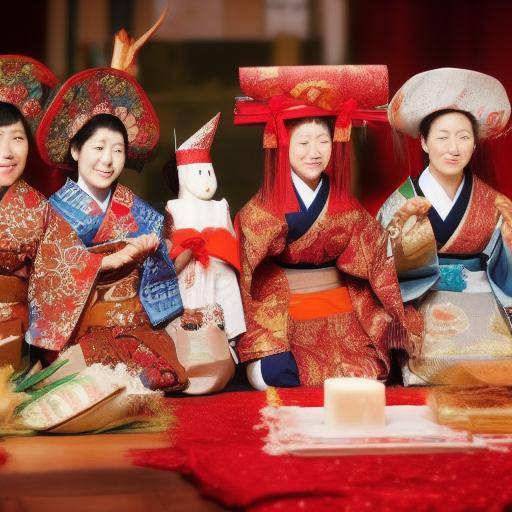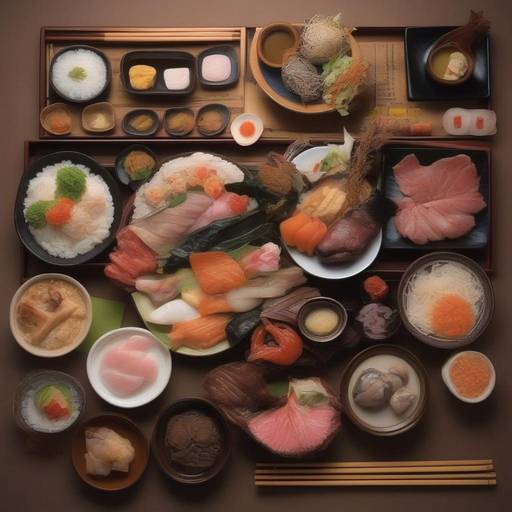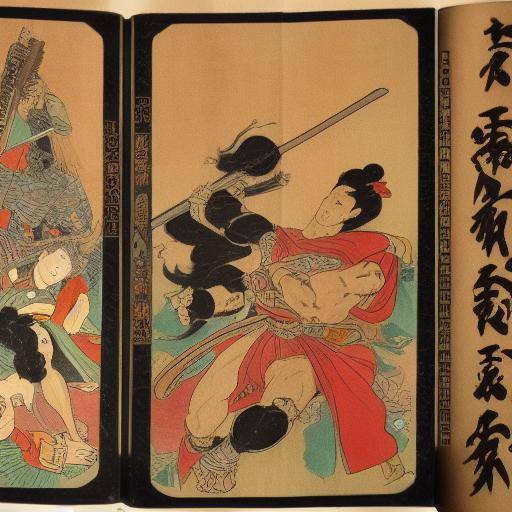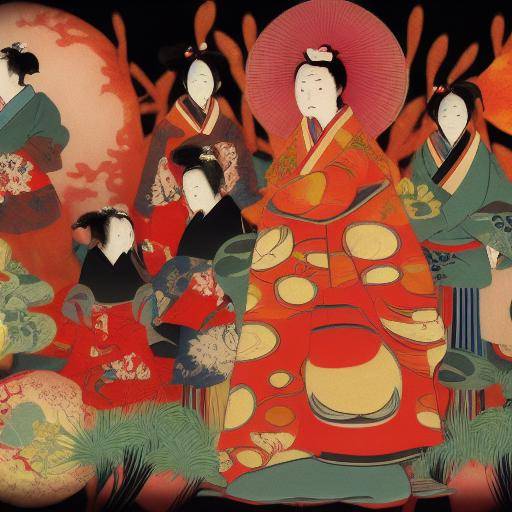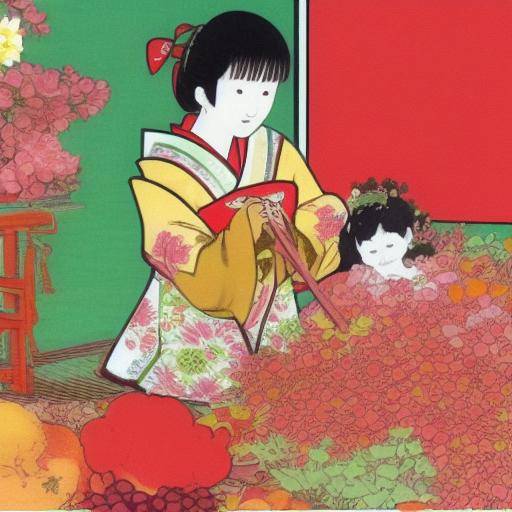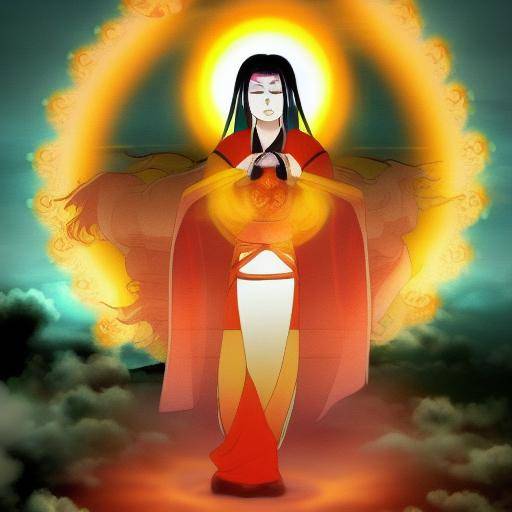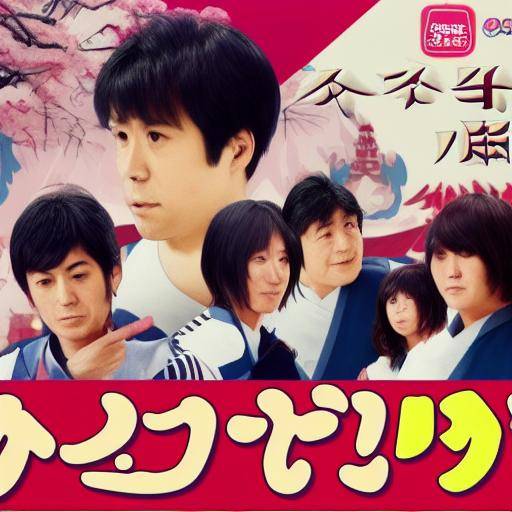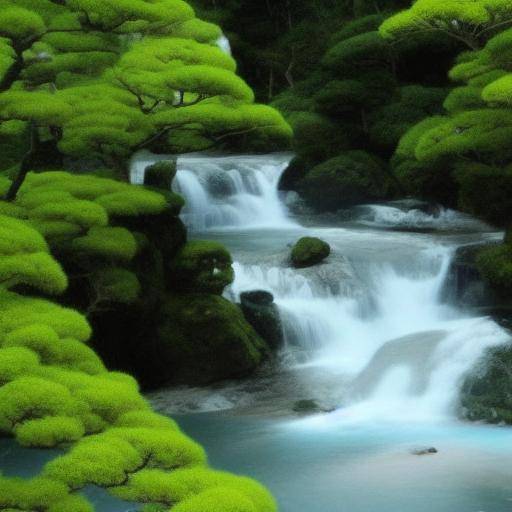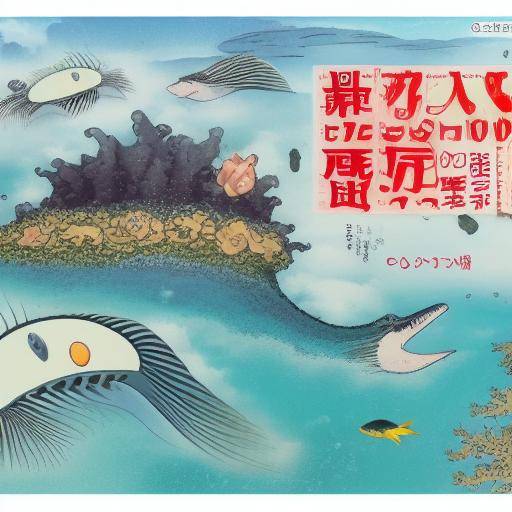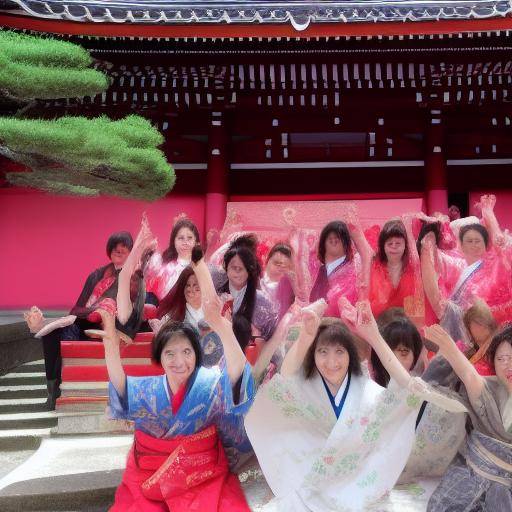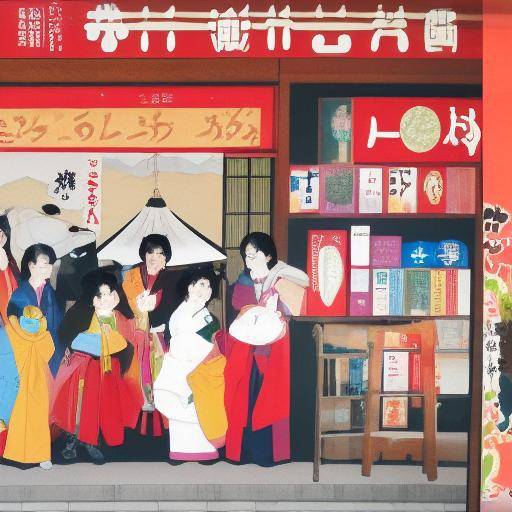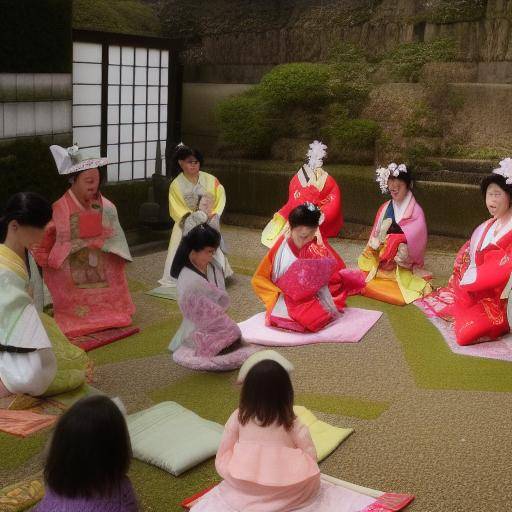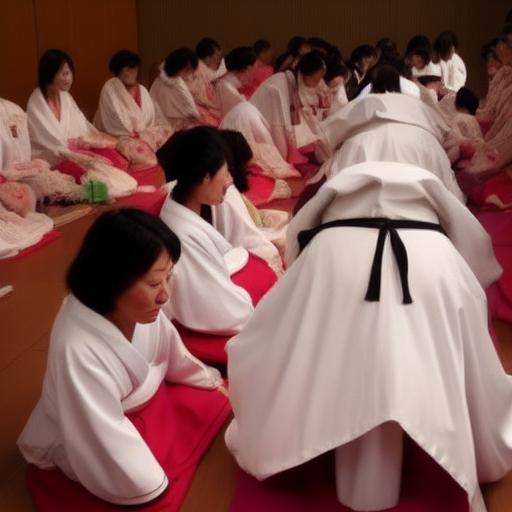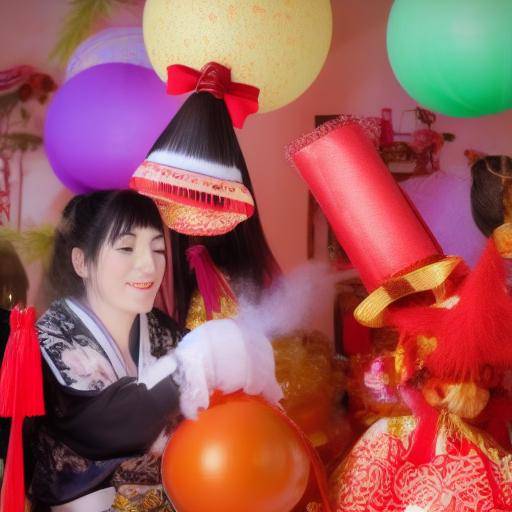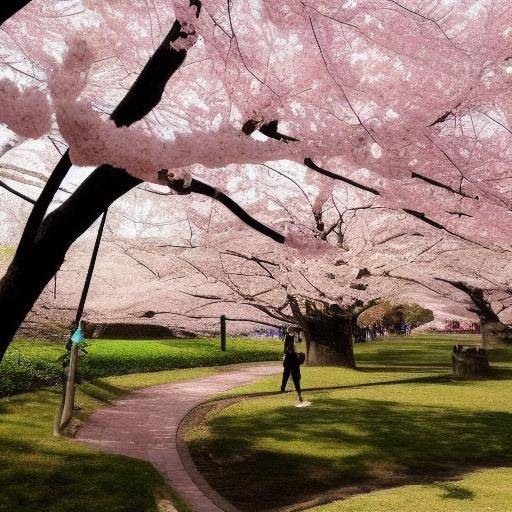
Japanese culture is rich in fascinating traditions, and one of the most emblematic is the Hanami, which celebrates the arrival of spring and the ephemeral beauty of flowering cherry trees. In this article, we will explore the history, meaning and contemporary relevance of Hanami in Japan, as well as its similarities with traditional parties and how this contributes to Japan's cultural identity. We will also provide practical advice to experience this wonderful celebration. Join us on this journey to discover the magic of Hanami in Japan!
Introduction to Hanami
The Hanami, which literally means "observing the flowers", is an ancient Japanese tradition that celebrates the beauty of the cherry trees in flower. This holiday is an opportunity for friends, family and colleagues to meet in parks, gardens and public spaces to enjoy picnics, contemplate the delicate beauty of the sakura and share moments of joy and camaraderie. The Hanami is not only a visual spectacle, but also represents the rebirth, the transientness of life and the importance of appreciating the present moment.
History and Meaning of the Hanami
The Hanami has its roots in the Nara period (710-794) and Heian (794-1185) in Japan, when the aristocracy enjoyed elaborate ceremonies to appreciate the beauty of cherry blossoms. Over time, the Hanami spread to all layers of society, becoming a widespread celebration. During the Edo period (1603-1868), the Tokugawa shogunate promoted the cultivation of cherry trees throughout the country, which contributed to the popularization of Hanami as a national holiday.
Beautiful Japanese tradition: Traditional parties in Japan
Japan is known for its rich cultural heritage and numerous traditional festivals that have historical and religious roots. These celebrations reflect the connection of the Japanese people with nature, various deities and the importance of honoring the seasons. From the famous Japanese New Year to the exciting Gion Matsuri Festival in Kyoto, each traditional party is unique and special.
1. (Oshogatsu)
The New Year is one of the most important celebrations in Japan, where people visit temples and shrines to pray for health and happiness in the coming year. Oshogatsu is a moment of reflection, purification and family reunion.
2. Doll Festival (Hinamatsuri)
The Hinamatsuri, also known as the Festival de las Muñecas, is held on March 3 and is dedicated to girls. During this holiday, traditional dolls are exhibited elaborately dressed to wish girls health and happiness.
3. Children's Festival (Kodomo no Hi)
Kodomo no Hi, or Children's Festival, is held on May 5th to wish children a healthy and happy life. A prominent custom is the exhibition of koinobori, colored tents that symbolize strength.
4. Tanabata
The Tanabata, known as the Star Festival, is held on July 7. People write desires in paper strips and hang them in bamboo, creating a magical and hopeful atmosphere.
5. Obon Festival
The Obon Festival, also called Bon, is an annual event that pays tribute to the ancestors, during which souls are believed to return to the world of the living. People turn on lanterns and dance at this summer festival.
The tradition of Hanami and its meaning in Japanese culture
Hanami can also be compared to other traditional celebrations in Japan, as all of them have deep links with nature and seasons. The New Year, Hinamatsuri, Kodomo no Hi, Tanabata and Obon reflect Japanese reverence by nature and their desire to harmonize with natural cycles.
The Beauty of Japan
Japan is known for its rich culture, ancient traditions and innovative modernity. From its majestic temples to its imposing skyscrapers, Japan offers an amazing contrast between the old and the contemporary.
Delicious Gastronomic Charm
Japanese cuisine is one of the most appreciated in the world, highlighting the freshness of the ingredients and the meticulousness in the presentation of the dishes. From sushi and sashimi to delicious ramen and exquisite wagyu, each bite carries with it the essence of Japanese culture.
Technological advances and Innovation
Japan is a pioneer in technology and innovation, with significant contributions in areas such as electronics, robotics and transportation. Its bullet trains, advances in artificial intelligence and creativity in design are outstanding examples of the Japanese avant-garde in the modern world.
Contemporary Natural Wonders
Japan's natural wonders are impressive. From the mystical bamboo forests in Arashiyama to the magnificent waterfalls of Nachi, passing through the majesty of Mount Fuji, Japan offers a wealth of natural scenarios of unparalleled beauty.
Hanami: A Link with Traditions
The Hanami is not only a visually spectacular event, but also plays a crucial role in the preservation and promotion of Japanese traditions. This festival connects people with their cultural heritage, fosters unity and social harmony, and conveys the importance of appreciating the ephemeral beauty of nature.
The Ephemeral Beauty of Cerezos
Flower cherry trees represent the transient nature of life and ephemeral beauty, teaching people to value the present and to find beauty in impermanence.
Union and Share in Community
Hanami brings together people in a relaxed and joyful environment, fostering human union and connection. Hanami's practice is a reminder of the importance of sharing special moments with loved ones.
Promotion of Tourism and Culture
Hanami attracts millions of national and international visitors, promoting tourism and appreciation of Japanese culture around the world. In addition, Hanami's festivities are an opportunity for artists, musicians and artisans to show their skills.
Practical Tips to Enjoy Hanami in Japan
Choose the Place and Suitable Moment
Investigate the popular places for the Hanami and choose the right time according to the forecasts of flowering. Some of the best places to enjoy the Hanami include Ueno Park in Tokyo, Himeji Castle and Maruyama Park in Kyoto.
Prepare a Traditional Picnic
Prepare a picnic with friends and family, including typical Japanese dishes such as onigiri, tempura, yakitori and mochi. Pack a blanket to sit under the cherry trees and enjoy the landscape.
Participates in Hanami Festivals
Find Hanami festivals that offer additional entertainment, food and cultural activities. These festivals are perfect to dive into the festive atmosphere and meet locals and visitors from around the world.
Respect for Nature and Public Places
By enjoying the Hanami, it is important to respect the natural environment and public spaces. Remember to collect and dispose of the waste appropriately to maintain the beauty of these spaces.
The Hanami Charm: Beyond Tradition
The Hanami holidays in Japan are a unique experience that captures the essence of Japanese culture and the ephemeral beauty of nature. This millennial celebration is a palpable manifestation of Japanese respect for nature, community and traditions.
Frequently asked questions about Hanami, Traditional Festivals and Japan
1. What is the cultural meaning of Hanami in Japan?
Hanami has a profound cultural significance in Japan, symbolizing ephemeral beauty, the transientness of life and the importance of appreciating the present moment. It also represents union, camaraderie and respect for nature.
2. What is the best time to enjoy the Hanami in Japan?
The Hanami season in Japan varies according to the region, but usually occurs between late March and early April. However, it is crucial to verify the flowering forecasts of the cherry trees to choose the optimal time for observation.
3. What are the differences between Hanami and other traditional parties in Japan?
Although the Hanami focuses on the contemplation of the cherry blossoms, other traditional festivities in Japan have specific purposes, such as the celebration of the New Year, the desire for happiness for children in Kodomo no Hi, and the tribute to the ancestors at the Obon Festival.
4. How do traditional festivities influence Japan's cultural identity?
The traditional festivities in Japan are fundamental to the cultural identity of the nation, as they reflect the connection with nature, religious beliefs and social values, thus transmitting the ancestral heritage of generation to generation.
5. Why is Hanami so popular among international visitors?
Hanami is popular among international visitors due to its unique visual beauty, its connection to Japanese culture and the festive atmosphere it offers. The opportunity to experience this unique celebration attracts people from around the world.
6. What is the impact of Hanami on Japanese economy and tourism?
Hanami has a significant impact on Japanese economy and tourism, attracting a large number of national and international visitors, which drives the tourist industry and promotes Japanese culture around the world.
Conclusion: The Hanami Magic in Japan
Hanami in Japan is more than just an observation of cherry blossoms. It represents the very essence of Japanese aesthetics, reflecting appreciation for ephemeral beauty, respect for nature and the importance of camaraderie. Through Hanami, you can understand the complexity and wealth of Japanese culture, as well as its deep connection to nature and traditions.
Hanami is a celebration that transcends the mere act of contemplating the sakura in flower, as it symbolizes renewal, hope and unity in society. In an increasingly accelerated world, this holiday reminds us of the importance of stopping us, appreciating the ephemeral beauty that surrounds us and finding harmony with nature. So, the next time a sakura blooms, get ready to immerse yourself in the magic of Hanami and experience the renewal of spring in the enchanting land of the rising sun!
Now that you know more about Hanami, traditional parties and amazing Japanese culture, are you ready to immerse yourself in this fascinating experience? Get ready to contemplate the amazing beauty of the cherry blossoms and immerse yourself in Japan's ancestral culture!
I hope this article meets your expectations and is of great use to your readers. Is there anything else I can help you with?



